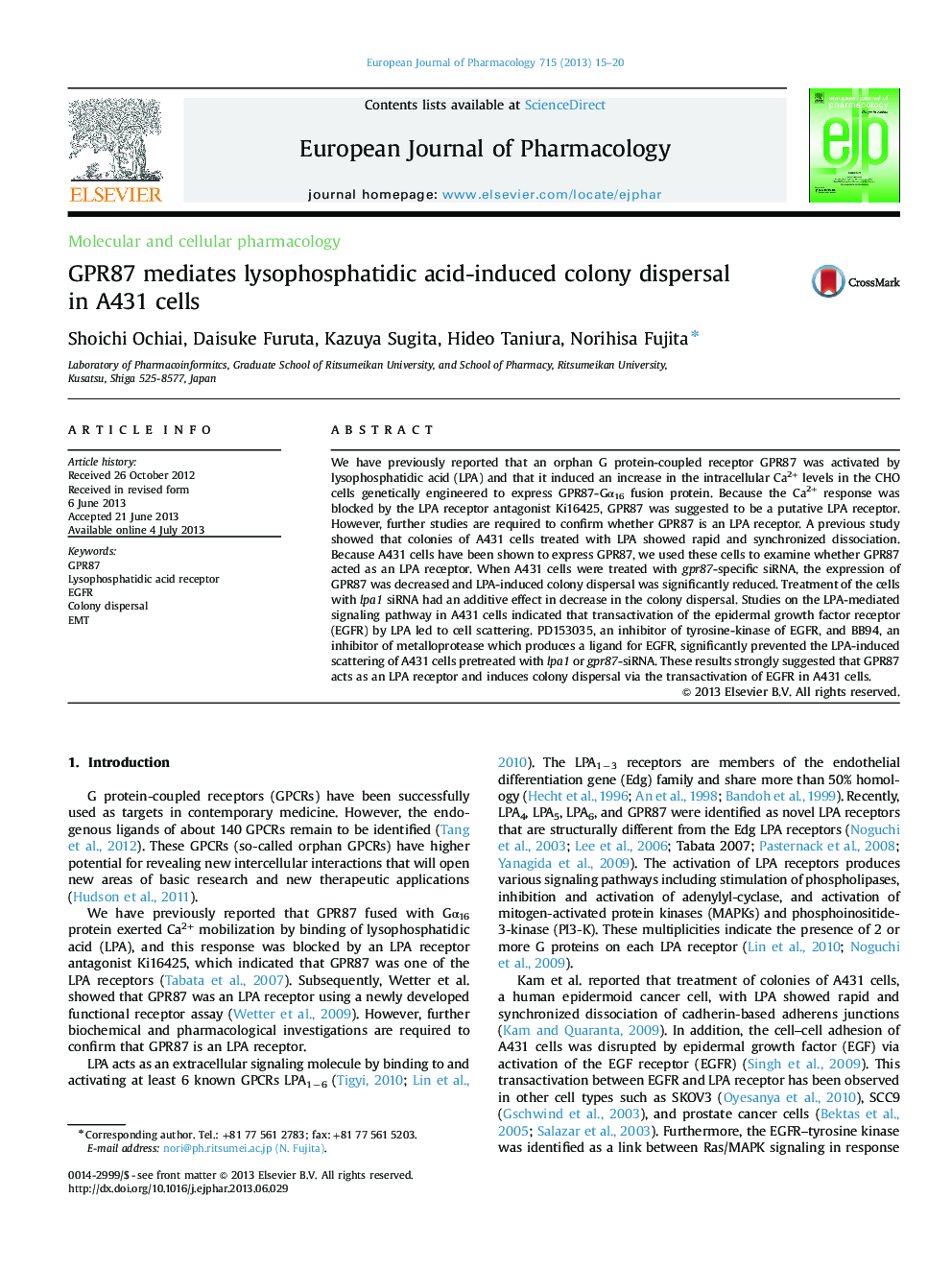| کد مقاله | کد نشریه | سال انتشار | مقاله انگلیسی | نسخه تمام متن |
|---|---|---|---|---|
| 2532048 | 1558966 | 2013 | 6 صفحه PDF | دانلود رایگان |

We have previously reported that an orphan G protein-coupled receptor GPR87 was activated by lysophosphatidic acid (LPA) and that it induced an increase in the intracellular Ca2+ levels in the CHO cells genetically engineered to express GPR87-Gα16 fusion protein. Because the Ca2+ response was blocked by the LPA receptor antagonist Ki16425, GPR87 was suggested to be a putative LPA receptor. However, further studies are required to confirm whether GPR87 is an LPA receptor. A previous study showed that colonies of A431 cells treated with LPA showed rapid and synchronized dissociation. Because A431 cells have been shown to express GPR87, we used these cells to examine whether GPR87 acted as an LPA receptor. When A431 cells were treated with gpr87-specific siRNA, the expression of GPR87 was decreased and LPA-induced colony dispersal was significantly reduced. Treatment of the cells with lpa1 siRNA had an additive effect in decrease in the colony dispersal. Studies on the LPA-mediated signaling pathway in A431 cells indicated that transactivation of the epidermal growth factor receptor (EGFR) by LPA led to cell scattering. PD153035, an inhibitor of tyrosine-kinase of EGFR, and BB94, an inhibitor of metalloprotease which produces a ligand for EGFR, significantly prevented the LPA-induced scattering of A431 cells pretreated with lpa1 or gpr87-siRNA. These results strongly suggested that GPR87 acts as an LPA receptor and induces colony dispersal via the transactivation of EGFR in A431 cells.
Journal: European Journal of Pharmacology - Volume 715, Issues 1–3, 5 September 2013, Pages 15–20